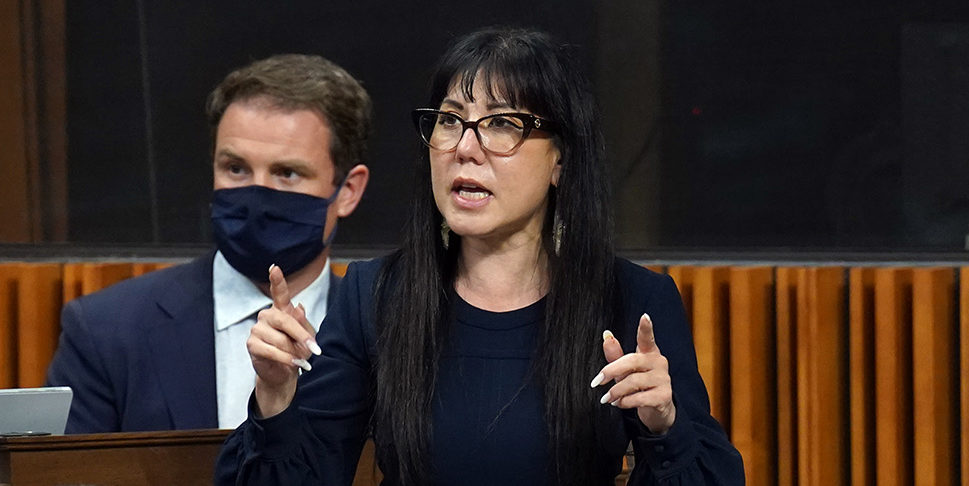Content warning: The following story contains details of residential schools. The Indian Residential School Survivor Society maintains a hotline for residential school survivors who are in crisis. The 24-hour a day crisis line can be reached at 1-800-721-0066.
Nearly two weeks have passed, and I still can’t quite believe what happened. On October 27, the House of Commons unanimously passed my motion calling on the federal government to recognize what happened at residential schools as an act of genocide. Not one single MP objected to its passage.
What a difference a year makes. In June 2021, my attempt to obtain unanimous consent to recognize residential schools as a genocide was blocked. It’s a testament to the work of survivors, their families and communities that have been impacted by residential schools. They have sacrificed so much to ensure people know the truth about this country’s history. And that my motion passed this time.
Why did I bring this motion forward in the first place? It’s because without truth, we cannot achieve real reconciliation in this country. The month before I originally introduced the motion, ground penetrating radar detected over 200 unmarked graves at the former Kamloops Indian Residential School. Many more heart wrenching discoveries followed, confirming what survivors have always known. That what was inflicted on them at residential schools, and to those children who never came home, was a genocide.
The Pope’s comments last summer were also important. Following his visit to Canada, Pope Francis was asked why he didn’t use the term “genocide” to describe what happened at residential schools. In response, he said that he hadn’t thought of using the word at the time, but that it was indeed a genocide. It’s highly significant that the head of the Church which administered about 70% of all residential schools made this admission, and the dialogue it sparked is one of the reasons why I reintroduced the motion this fall.
Residential schools were undeniably an act of genocide
One only has to look at the UN definition of genocide to see why what Pope Francis said is accurate. Article II of the UN Convention on the Prevention and Punishment of the Crime of Genocide defines genocide as:
any of the following acts committed with the intent to destroy, in whole or in part, a national, ethnical, racial or religious group as such:
- Killing members of the group.
- Causing serious body or mental injury to members of the group.
- Deliberately inflicting on the group conditions of life calculated to bring about its destruction in whole or in part.
- Imposing measures in order to prevent births within the group.
- Forcibly transferring children of the group to another group.
It is evident that every part of this definition applies to residential schools. There was a clearly expressed intent by the leaders of this country to destroy Indigenous peoples. Take Duncan Campbell Scott, the infamous civil servant from the Department of Indian Affairs who ran the residential schools system. He said that “Our objective is to continue until there is not a single Indian that has not been absorbed into the body politic and there is no Indian question, and no Indian department…”
Or take John A. Macdonald, who said this in the House of Commons about the reason behind taking children from their families and communities and putting them in residential schools:
“When the school is on the reserve the child lives with its parents, who are savages; he is surrounded by savages, and though he may learn to read and write his habits and training and mode of thought are Indian. He is simply a savage who can read and write.”
The architects of this evil system did not try to hide its purpose. They were proud of it, and there is no denying the genocidal intent conveyed by their words. Indigenous peoples know it, the Pope knows it, scholars know it. And now our country’s parliament has acknowledged it as well by passing my motion.
A historic moment in Canada
Many people, including myself, have called this an historic moment. But I want to emphasize just how historic it was. In the past, I’ve described our parliament as the eye of the colonial storm. It’s a place where we have to continually battle for our rights as Indigenous peoples to be respected. Let’s remember that this is the place, which in 1886, defined a “person” as “any individual other than an Indian.” The significance of the same institution that sought to erase our very existence as a people now acknowledging the truth of what happened in residential schools cannot be overstated.
It’s also historic because of the fact that the genocide took place within our country’s borders. Canada has never recognized a domestic genocide, only ones that took place abroad. I’m hopeful that this signals a greater willingness to come to terms with our own history. Only then can we truly move forward on the path of reconciliation.
Now that Parliament has recognized residential schools as a genocide, it’s important that we carefully consider our next steps. In all of my actions regarding the motion, I have been careful not to do anything that would cause survivors harm. As the process moves forward, and we work with members of the government on formal, federal recognition, this must be a guiding principle.
In October, MPs let the truth be heard within the walls of that colonial institution. Let’s ensure that it’s not the end, but the beginning of a reckoning with all aspects of our country’s past. For without truth, there is no reconciliation.




